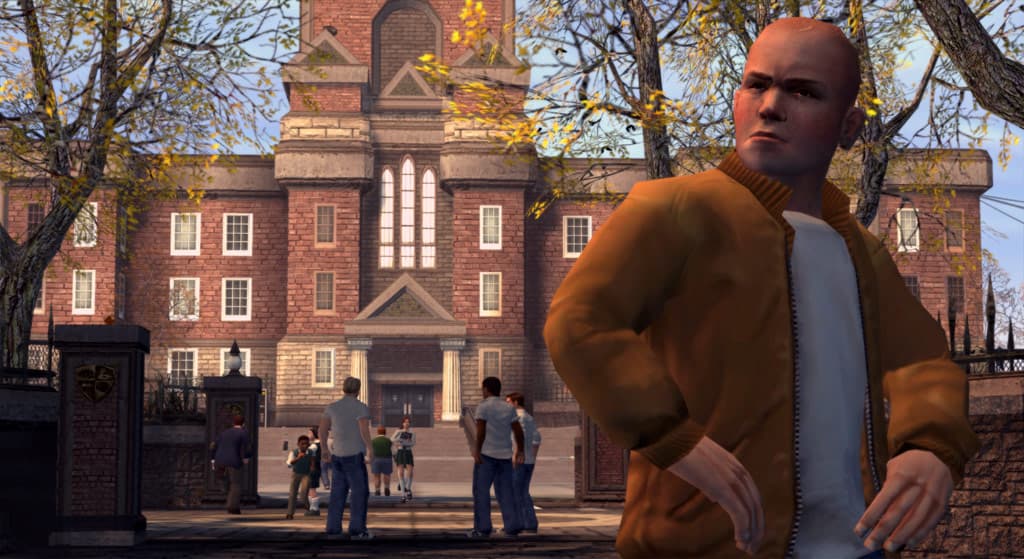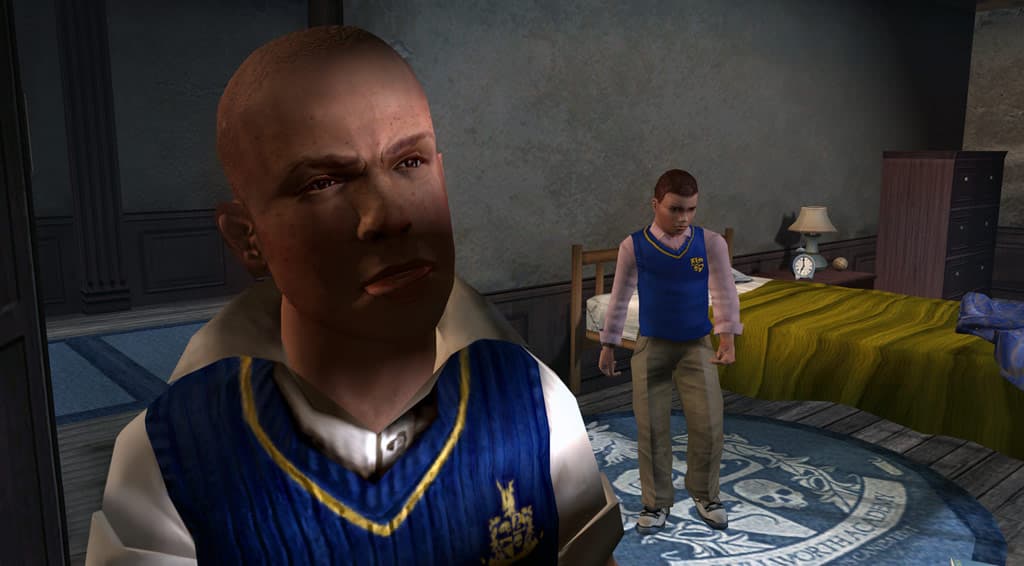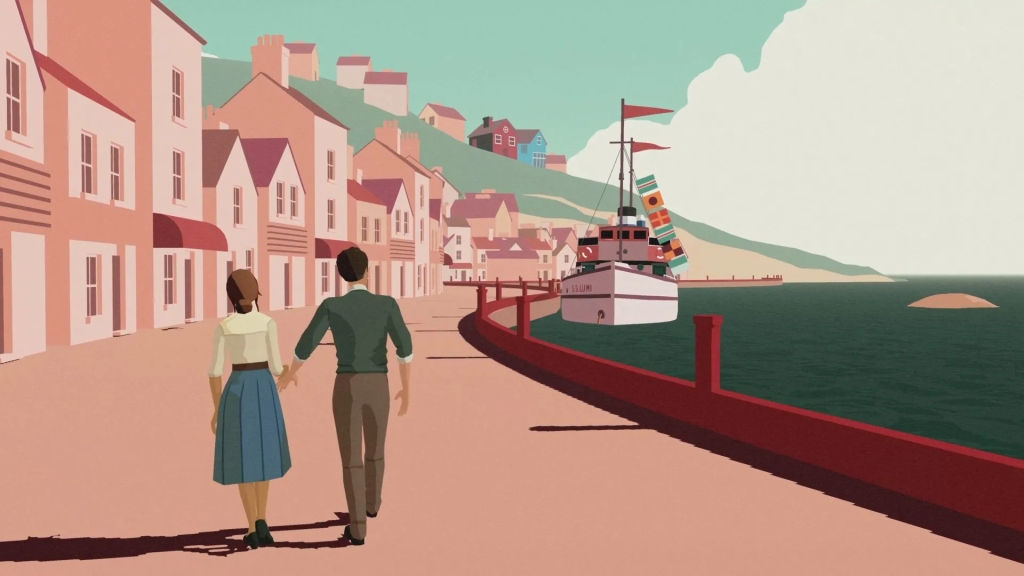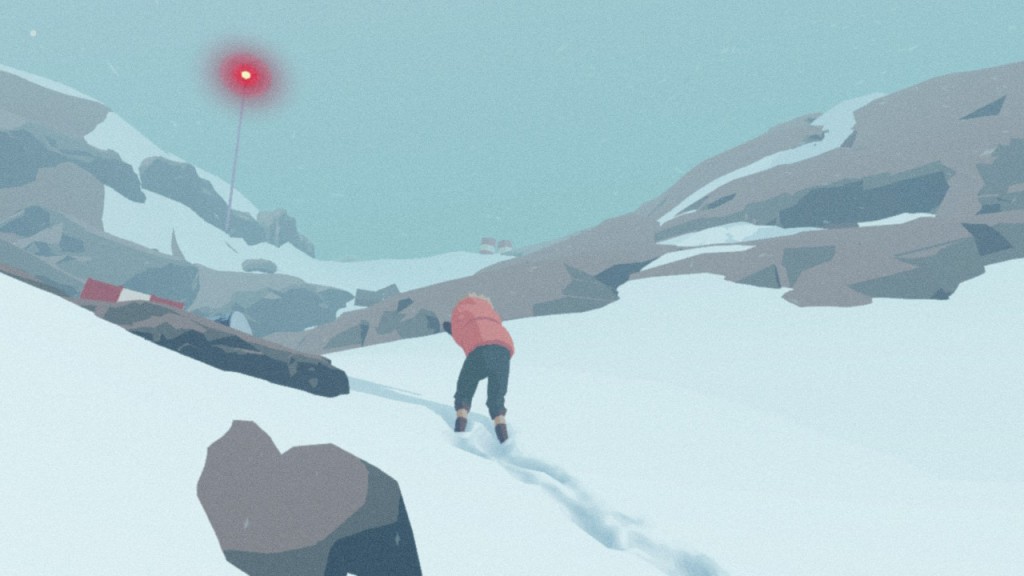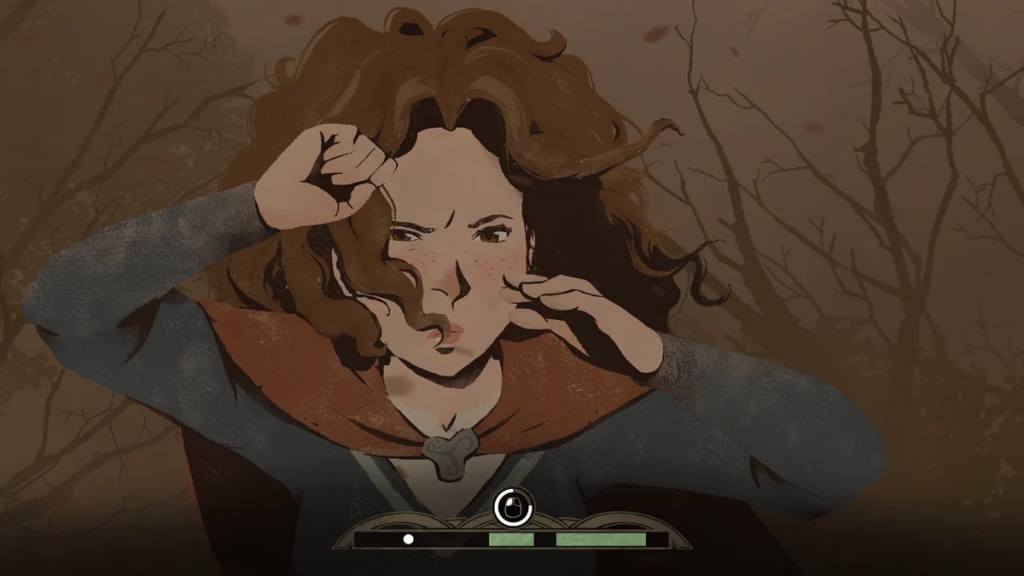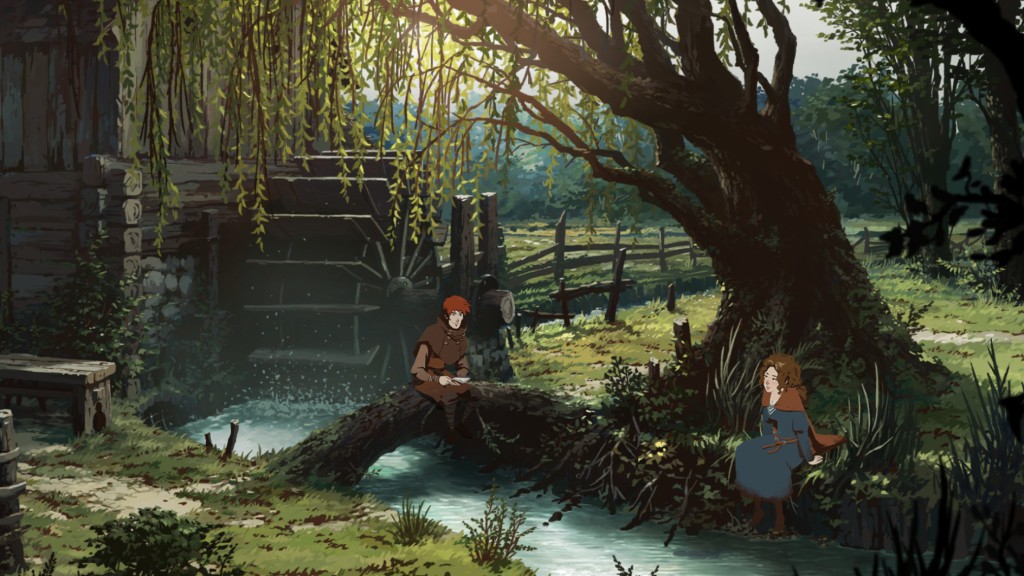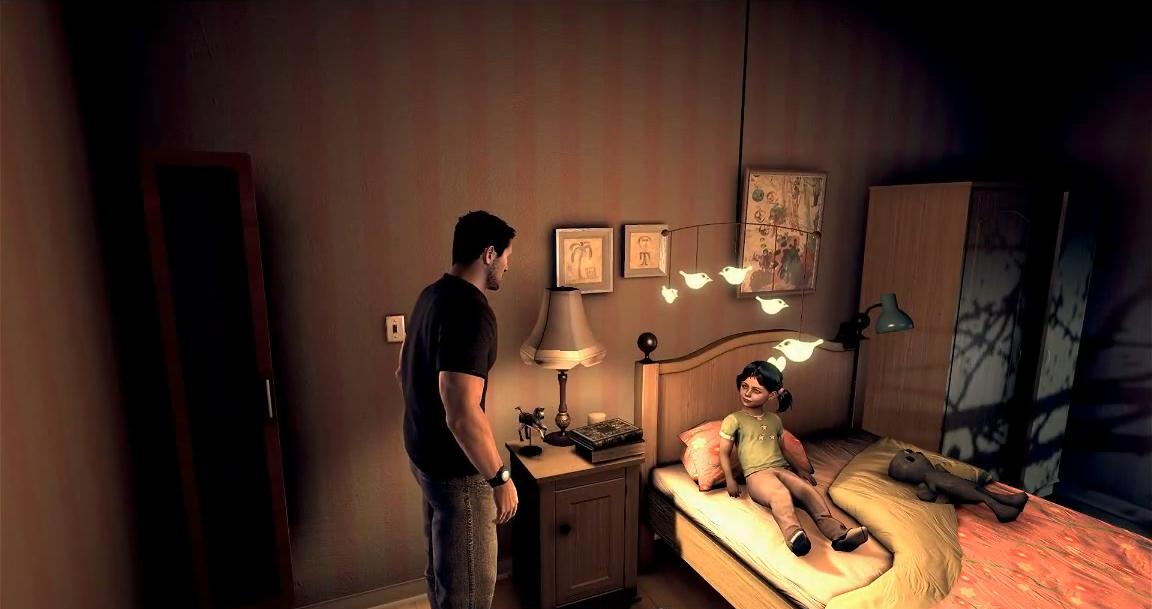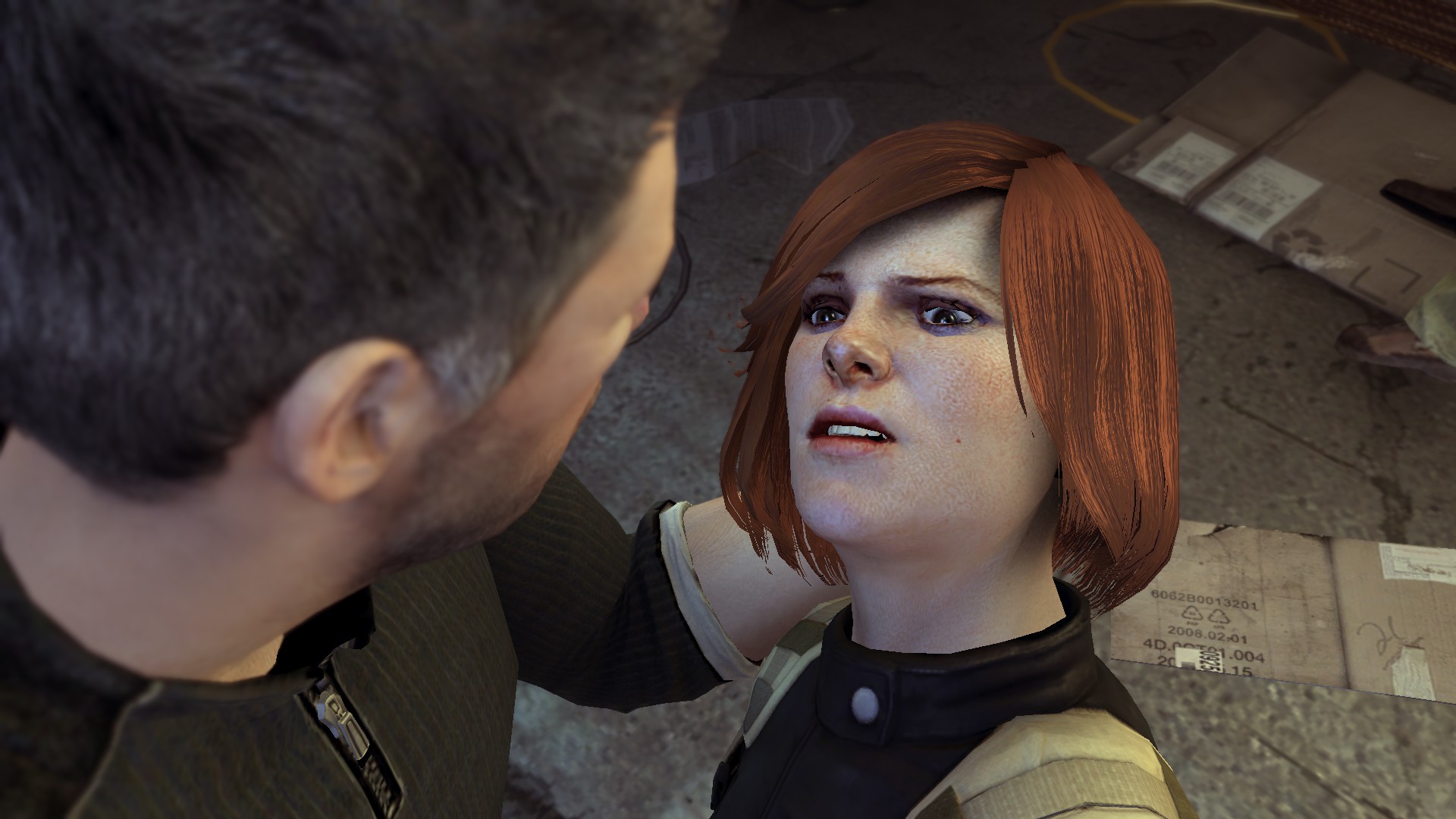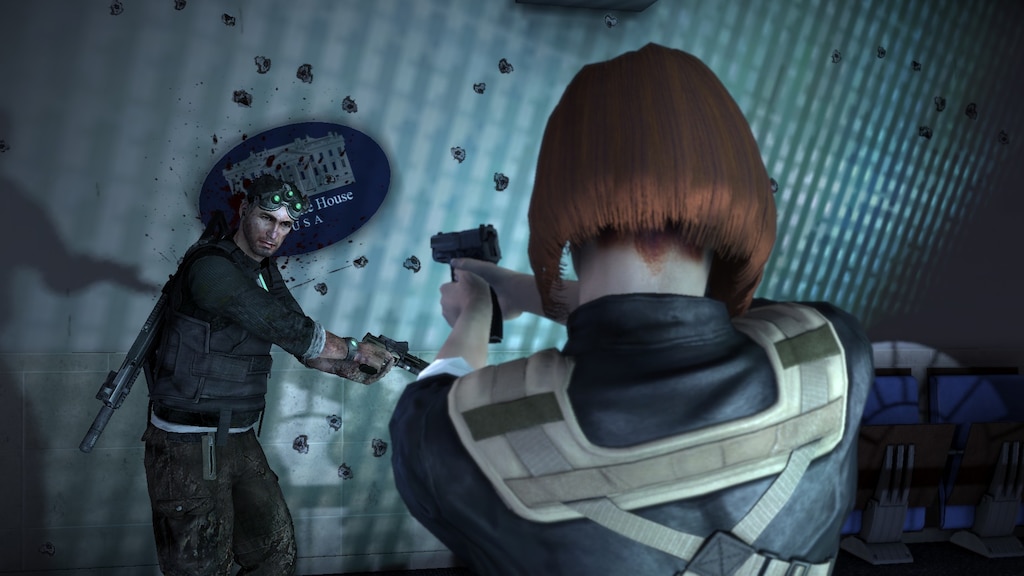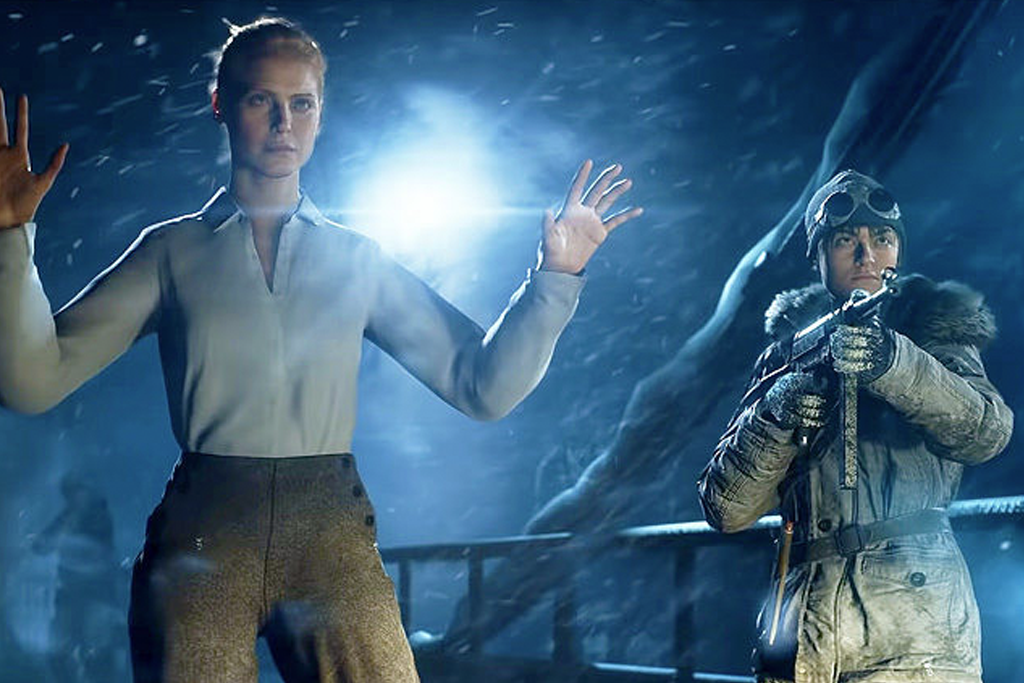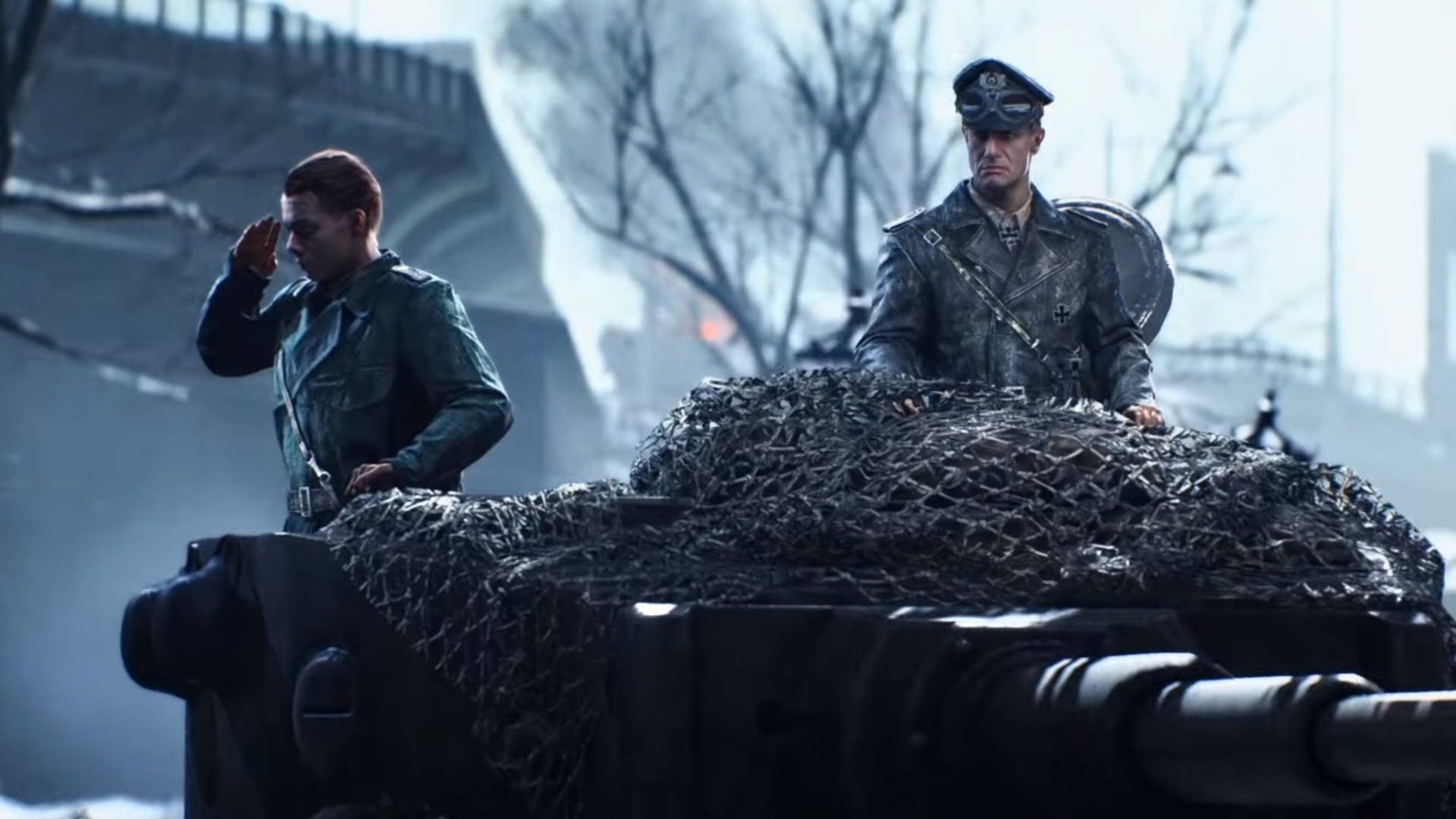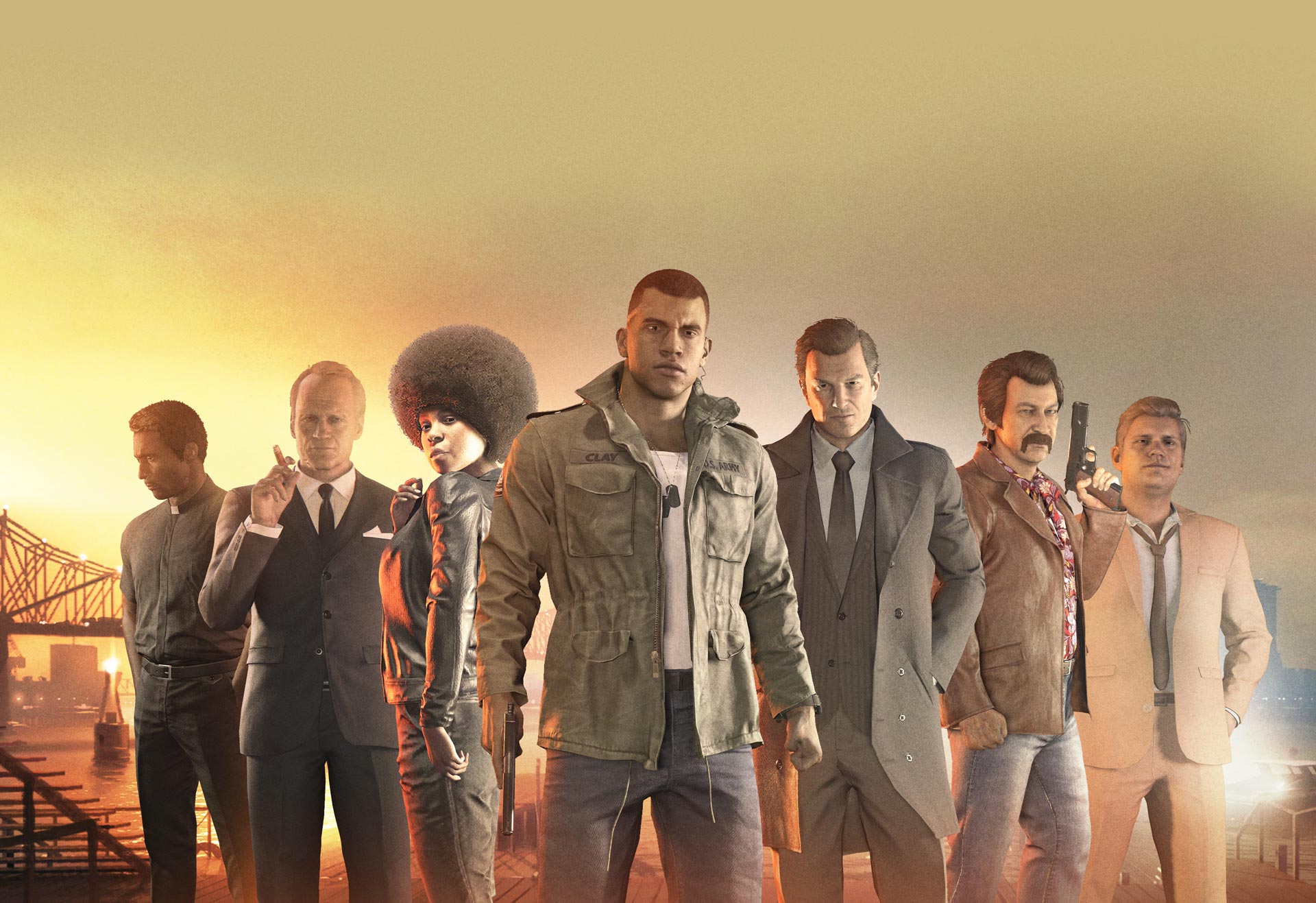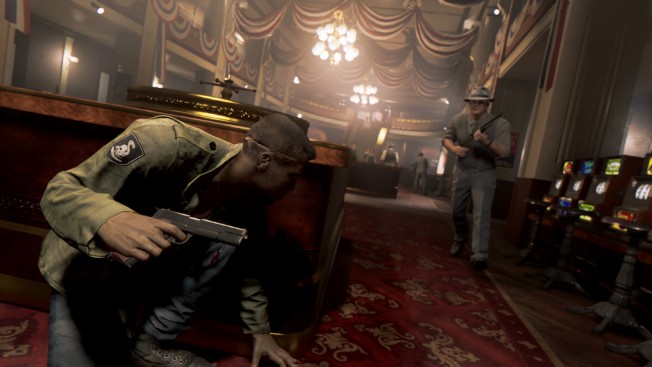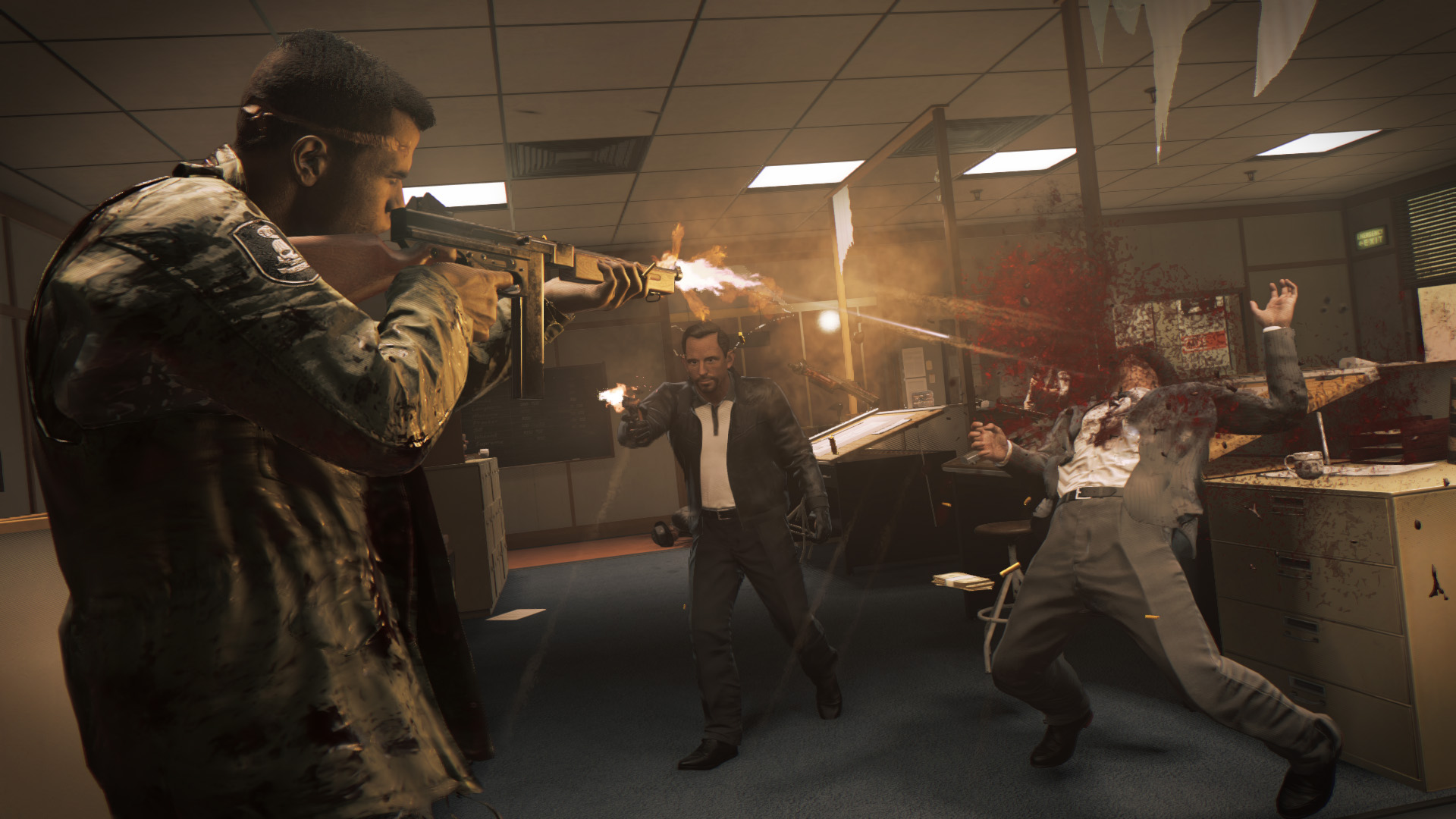I always have a sense of excitement and trepidation when picking up a new Call of Duty game.
I don’t play online shooters so I know I’m not the target audience who love their team deathmatches and their Battle Royale modes, rather I drop my cash for the story.
Call of Duty 4: Modern Warfare sparked an interest in this sometimes-maligned side of CoD with its depiction of stealthy SAS toughs behind enemy lines as well as the big bombastic spectacles of an invading US force.
When Modern Warfare got rebooted in 2019 I picked it up to see what new narrative threads had been added. I wasn’t too bowled over (you can read more here), but I was interested to see where the franchise went next.
And so a few days ago I played through all of the new Modern Warfare games to get a full overview of the for a deep dive analysis.
“Bravo Six Going Dark” – The Modern Warfare Reboot Trilogy: An Analysis
Call of Duty 4: Modern Warfare is one of the best paced games in the history of gaming.
Its sense of timing and when to ratchet up tension is perfect displayed by its two playable factions, the SAS and the US Marines.
The SAS sneak and use subterfuge while the US Marines use every weapon known to man to obliterate their enemy.
It is a balancing masterclass of the switchblade and the sledgehammer.
CoDs from World at War through MW2, Black Ops, MW3, and beyond dialled back the switchblade in for more sledgehammers, until 2019 when the first of the MW reboot released.
This game is 90% switchblade, a complete reverse of the previous CoDs and in retrospect quite refreshing.
Super sneaky “tactical” games had been popular in the years preceding CoD4, mainly helmed by the Rainbow Six series and it seemed that the new CoD was going to take more of a stealthy approach to a first-person shooter.
This is exemplified by the most well-known mission from MW 2019, “Clean House”. The player works as part of the SAS and clearing out a terrorist cell that has set up shop in a town house in north London.
Bathed in the green light of night vision with hardly any musical notation, the mission is tense, with many tight corners, hidden terrorists and tough calls needing to be made on the use of lethal force.

The coin-flip of rules of engagement and civilian presence is highlighted quite a lot in the game, with “Embedded” and “The Embassy” asking the player to leave unarmed civilians to be hanged or shot and “Old Comrades” putting the player on the other side and threatening a terrorist’s family with a gun.
These missions show the new face for the story in relation to the hot contemporary political topics of the time. CoD4 visually referenced the invasions of Afghanistan and Iraq, and CoD 2019 takes similar inspiration with terrorist attacks in highly populated areas, siege events like Benghazi and female-led resistance forces.
Speaking of which, the character of Farah who is the head the resistance of Urzikstan (the fictional Black Sea country and centre of conflict) is very welcome in a game series that does not have much space for female roles. She speaks both English and Arabic, and its refreshing to have entire sections with subtitles, again, something that until recently wasn’t widely accepted in gaming.
Players experience a lot of key moments with Farah and her brother Hadir, with a memorable missions including the two as children and having to use improvised weaponry like scissors to defend themselves from invading Russian forces, or being waterboarded when they are taken prisoner.
The rest of the cast are also good characters, with CIA instrument “Alex” being entrenched with Farah and the rebels, his handler Laswell (another female character and one in authority), and then the two British lads, Kyle “Gaz” Garrick and Captain Price. All the actors put in stellar performances.

However, the reasoning behind Gaz and Price being involved in the story is an annoying stretch. Price is with the SAS and Gaz is part of the CTSFO but then the CIA spook Laswell can just call up and get him to seemingly abandon his post to hunt down a terrorist leader.
It’s a weird exceptionalism that was pervasive towards the end of the previous MW trilogy, of Price playing four-dimensional chess with his enemy and being excused because he is the only man capable of averting world destruction.
Price even says that to Gaz towards the end of MW 2019. Gaz is frustrated by the rules of engagement in the CTFSO and so Price recruits him for his taskforce. But when Prices threatens and unarmed woman and child as “leverage” over a terrorist, he moralises it to Gaz, saying,
“End of the day somebody has to make the enemy scared of the dark. We get dirty and the world stays clean.”
Price talks about the blood on his hands and lines in the sand and it feels like it’s going to crescendo with a message, a personal story of violence and limits to rationalise his view, but it’s left as it is and ends more as an encouragement rather than an indictment of morally grey warfighters.

The game ends on a sledgehammer peak with all the characters joining forces and sieging a Georgian chemical plant and taking back Farah’s homeland from the invaders.
It’s notable also for the death of “Alex”, who doesn’t go out in a blaze of glory, firing his weapon with one hand and killing several enemies, but instead with a smile and a “yes ma’am”.
The bombs the team places are damaged and someone has to stay behind to detonate them. Farah is ready to sacrifice herself to her cause, but “Alex” tells her someone still needs to deal with the rogue Russian General Barkov and that should be her task.
“Alex” says, “I’ve been on assignment my whole life. This…is one I believe in.” While he is dedicated to the fight, he can’t win the war for her. It has to be Farah to free her country from Barkov and in the end she “orders” him to blow up the plant while she defeats the general.
It’s a great moment of small heroics and knowing where one is placed in the grand scheme of the world and the only downside is that “Alex” is a warm and calming presence in a game of dark and cold look through inhumanity.
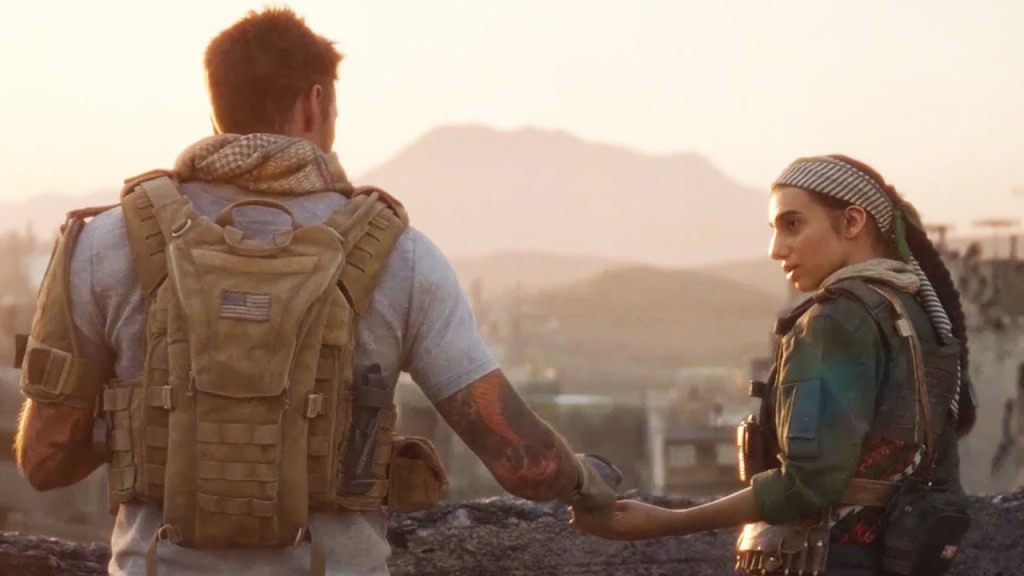
So the world is saved, Urzikstan is freed, and Price talks with Laswell about a new taskforce with some choice friends from the SAS. He names himself, Gaz, Soap, and Ghost as his core team and gives them the name 141.
Obviously being a reboot there were going to be some mentions of characters, places, events and reworks.
Garrick being revealed as Gaz was nice and lends a smidge of diversity to the core characters, but apart from that there wasn’t any big or well-reasoned connections to the original.
Sgt. Griggs returns in a blink-and-you-miss it role in “Hunting Party”. General Shepherd, Zakhaev, Pripyat, and Al-Asad all get name dropped in the end credit scenes.
The most egregious references for me were of memes from the original Modern Warfare.
The line “check your corners” in CoD4 became an internet joke due to the way Price performs ands repeats it in the level “Crew Expendable”.
The line is used again by Price in the reboot during a terrorist attack in “Picadilly” and would fit the moment…expect it has over a decade’s worth of meme-baggage attached to the phrase.
The same happens in the mission “Highway of Death”, where while testing a high-powered rifle the player is asked to shoot a piece of fruit.
When a shot is landed a friendly NPC says, “His fruit-killing skills are remarkable.” Again, it could fit the scene, but just pulls me out of the moment.
But with that final note, let’s move onto Modern Warfare II.
For the following, MW2 will refer to the 2009 game and MWII will refer to the 2022 game.

Modern Warfare II follows in its namesake’s tradition of being bigger, bolder, and brasher than its predecessor, dialling in a few more sledgehammers but having them disguised as switchblades.
Like the original MW2 the previous story is mostly left in the past, with only passing references to the Al-Qatala (AQ) terrorist organisation and Urzikstan. Instead MWII carves out its own special forces story and to most intents and purposes it succeeds…just.
Just like MW 2019, it has a great collection of characters who perform the hell out of the script, with interesting locations and missions.
Mexican Special Forces characters Alejandro and Rodolfo are cool additions to the multi-culti team of 141 and add the sense that global terror can lay anywhere (with a large dose of dialogue in Mexican Spanish with subtitles).
Ghost and Soap join the gang, with a fun buddy-cop dynamic between the two adding a great dose of levity throughout the game. Farah returns for a fun vehicle-based mission, and Gaz and Price seem to have grown further than a simple mentor/mentee connection. Everyone gets more to play with and there is a real sense of teamwork and camaraderie between the factions.
We also get a clearer introduction to another player in the MW series, Shadow Company and its leader, Commander Graves.
Shadow Company always struck me as an curveball inclusion in the old Modern Warfare series, but that was before I understood what PMCs were and what they did.
Still, it’s still unclear what Shadow Company is in relation to Shepherd in the original but in the reboot I think their uneasy quasi-affiliation with TF141 is an interesting comment on the nature of a modern war setting.
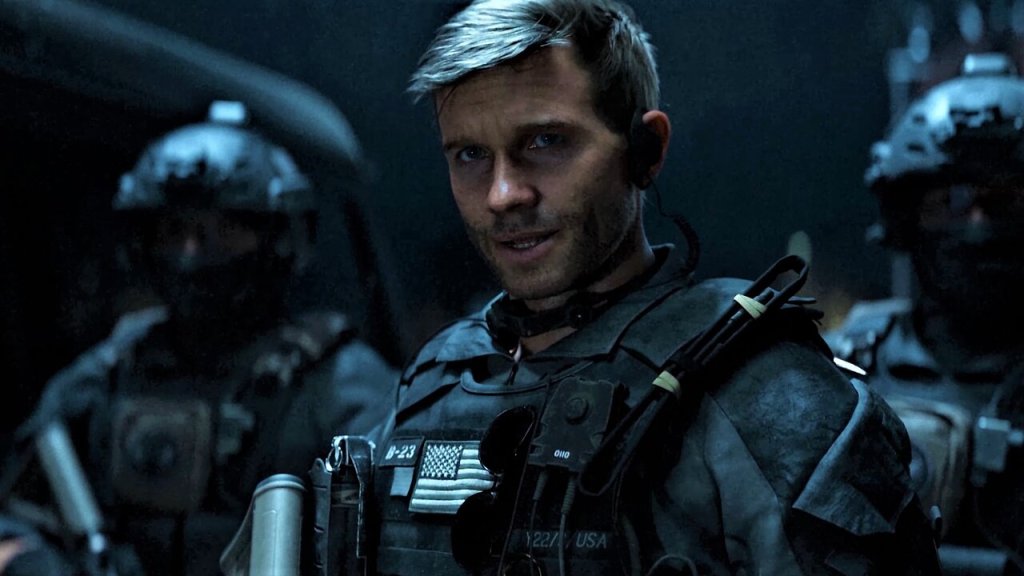
Like the original MW2, the story of MWII focuses on the power vacuums left after Western aggression and what fresh horrors arise when left unchecked.
The stealthy aspect is back with the majority of missions featuring silencers and night-time settings.
Some standout set-pieces including infiltrating an Amsterdam harbour through water, avoiding enemy patrols in Mexico during a rainstorm, or breaking into a cartel lord’s mansion for a face-to-face confrontation.
Every other mission feels new for the series with dialogue sequences, improvised weapons, swimming, climbing, and rappelling, and rarely are they one-and-dones, trotted out for a single sequence and then dropped like previous titles.
Instead most missions layer these aspects atop one another, leading to a more versatile play session.
The references to previous games are a 50/50 split on how they land. Two missions highlight it perfectly. First is the mission “Recon by Fire”. Taking notes from what is considered to be the best mission in CoD history, “All Ghillied Up”, “Recon by Fire” is a sniping/stealth mission on a remote island.
Price and Gaz are in Ghillie Suits, they have their long range silenced rifles, and they are heavily out-gunned by the occupying force, just needing to get to their objective with as few casualties as possible.
It even remakes the hiding-in-the-grass-as-enemies-pass scene from CoD4, with Price voicing a one-to-one recreation of MacMillan’s lines. And it just doesn’t work for me.
Part of “All Ghillied Up”’s charm was its tension. You had to use stealth and tactics because you were extremely outgunned. When the tanks rumble past as you hide in the tall grass it’s meant to make you feel small and powerless.
In “Recon by Fire”, no tanks roll past, just a squad walks around you. A squad that two minutes later I could take out with my rifle with no issues.
The game goes semi-open world with how to approach its objectives and how to shoot, giving the complete opposite of having to be stealthy and tactical because at some point the bullets have to start flying.

Contrast this with “Dark Water”, a double mission where the player first has to infiltrate an oil rig hosting missiles and then a container ship close by which has the launch capabilities. It is a direct reference to “Crew Expendable” and “The Only Easy Day…Was Yesterday” from the first two MW games respectively.
But while it recreates similar settings, it has the player do different tasks. On the rig it’s a search and destroy rather than a rescue, leading to different tactics. On the ship, the cargo containers are sliding around, creating hazards and blockages for the player.
That isn’t to say that MWII is just a greatest hits of previous levels. One levels that I feel is unique is “Borderline”, with Mexican Special Forces leads Alejandro and Rodolfo seeing an Iranian major smuggled over the US border wall and following him over despite knowing they are breaking the rules of engagement.
The mission is a suspenseful evening chase through the backyards of a sleepy border town, with short but punchy engagements and civilians getting mixed up in the action.
Several times the civilians will threaten and attack Alejandro and Rodolfo as the two follow their target. The NPCs hold baseball bats or reach for guns with the player instructed to “de-escalate” the situation…by aiming their gun at the other person.
It’s a little shocking at the start but questions start to arise as soon as it appears. Alejandro and Rodolfo break into these peoples’ houses to follow their target. They could easily call out that they are Special Forces to pre-emptively de-escalate the situation and move on as quickly as possible.
In later levels the game uses a wide branching dialogue system so the thought could be why not use it here to verbally de-escalate? Instead the only option is to threaten anyone who gets in the way.
Branching dialogue is used a lot in “Recon by Fire” between Gaz, Price, and Laswell and it’s delightfully charming and light banter, something I wish the game had more of.

But a final point I want to make is that while we have these great set pieces and characters…yet there is an underlying hardline conspiratorial edge to the story.
While the Americans in MW 2019 annoyed me for their frat-boy egos and Captain Price unnerved me with his “Hard Times Deserve Strong Men”-esque speech, MWII ties together both Middle Eastern terrorist organisations and the Iranian Military with Mexican cartels and traffickers.
It sounds like the most buzzworthy radical viewpoints born out of too much Fox News and a Tom Clancy marathon. They even try to rationalise it when Alejandro says, “terrorists don’t cross the southern border”, only for Laswell to reply, “They know that and we know that and that’s exactly why they are going to do it.”
There are multiple conversations between Gaz and Price and Alejandro with the rest of 141 about how the relationship between Iran and the cartels work, but most of it comes down to “money” or nebulous “power”, without any further dissection of the topic.
While the original MW trilogy could never be thought of as critical of American military might or nuanced with geo-political matters, it never got deep into outright paranoia over the enemy.
All the previous Russian baddies were labelled as “Ultranationalists” to differentiate them from the state and people of Russia. In MWII it seems as if the baddies are a cabal of different groups all bent on weakening the West.
As usual with MW sequels, there are several twists and turns on loyalties and alliances throughout the campaign. While I saw breadcrumbs to a final surprise, in the end I was preparing for a curveball that never came.
There are subtle references that the Mexican army have taken over cartel business, or that fan-favourite Ghost was taking orders not from 141 but General Shepherd and Shadow Company and it felt like there would be one final twist on who can we trust.
But no, MWII ended rather like how MW2 ended, with Shadow and Shepherd pushed to the sides so that the stage was free for series baddy Vladimir Makarov to take centre stage in time for Modern Warfare III.

Modern Warfare III released only one year after MWII with a development time of only sixteen months.
It was an incredibly rushed development schedule and I do not want to pour scorn on the developers, artists, writers, producers, QA, sound, and anyone else who helped make these games.
It seems every aspect of the game from campaign to multiplayer has already been criticised for its lower quality, but I wanted to make a mention of it before I got to my position first.
Because the game does have some excellent moments, including its opening.
We start literally and metaphorically in the dark, with only a submarine’s sonar blips for a soundscape. We see soldiers in wetsuits preparing for a stealthy mission, swimming through the darkness and surfacing outside a island prison fortress.
The missions title “Operation 627” indicates that this will be a breakout mission, referencing MW2’s famous “The Gulag”.
As the team ascends the fortress walls and picks off lone guards, they all speak with British or American accents. They use slang words commonly used by Price and Gaz. Their use of weapons and tech indicates they are highly trained.
A diversionary explosion allows the soldiers to slip into the prison, where they then descend, taking out guards along the way and freeing prisoners as an extra layer of chaos for their escape. The intruders reach their end goal, freeing a prisoner in solitary confinement, who turns out to be Vladimir Makarov.
The whole operation was a bait-and-switch, giving the impression of a 141 mission but instead conducted by Makarov’s private military.

It’s a cool opening, heavily-scripted as the start of most CoDs are, and it has a great contrast of both switchblade and sledgehammer woven throughout. While some may call it a cheap switch trick, I think it’s a short yet strong opening to pump players ups and get them into the action.
We’ve had Russian characters speaking English before (one of the most infamous lines from CoD is “No Russian”) and the 627 is more a wink and a nod to players who remember.
Makarov’s return was inevitable, yet it seems to have fallen rather flat in comparison to the original.
While Makarov was also first introduced at the beginning of MW2, I think players saw him as a “bogeyman”, always being just one step ahead of the player, in our minds but never in our crosshairs.
This was strengthened by “No Russian”. Having Makarov next to you gave him a sense of permanence. In MWIII, I feel he has a cutscene quality, always somewhere but never a strong presence.
While names in a reboot will always bring a form of background knowledge, Makarov’s credentials in MW2 were strengthened by his association with original MW baddy Imran Zakhaev.
Here, he’s just a guy who wants to watch the world burn. But maybe the vague impulses of Makarov will come clearer later in the game. So let’s move onto the next mission, “Previous Cargo.”
We welcome the return of Farah…and then blink and scratch our heads at the return of “Alex” and Commander Graves, both apparently alive and well after their supposed explosive ends in MW and MWII respectively.
When I saw “Alex” and Graves return I had to search if I had missed a cutscene or a line of dialogue that indicated they had escaped alive in either campaign.
Sure the player never sees a definitive end of the two characters, but “Alex” being alive negates his character development in MW, and Graves being alive and then also a “friendly” hurts the Shadow Company arc of MWII.
I think this is what people refer to when they criticise the game, the fact that two dead characters, one from nearly five years ago, just pop up without a hint of how they survived.
Farah’s mission twists unexpectedly with the arrival of the “Konni” group attacking Farah’s militia and stealing missiles. While Konni haven’t been mentioned by name before in the series, they did feature in one mission in MWII, and are Makarov’s private army.
I’ll forgive the name not being dropped previously. Game scripts get cut and shuffled around numerous times so it could have been a point that was announced earlier that didn’t make the final cut.
I do actually like the background we get on Konni being a private military army with an aim to bring glory back to Russia.

Makarov’s abilities in MW2 and MW3 were always a bit tenuous, committing a terrorist attack and framing the USA, that works. But then the logical leap to Russia invading the USA, then Makarov somehow orchestrating an invasion all of Europe as well. It just stretched plausibility on how logistically it all works.
Having Makarov’s soldiers be a private military group with a stated goal of restoring a nation’s glory, and have funding and resources for their “missions”, it works better than what in the original seemed to be a single terrorist cell conducting World War Three.
Konni steal missiles that the USA had been giving Farah to use if her country was ever invaded again with their next target being a chemical plant in Russia. 141 deploy but arrive too late to stop Konni from taking them.
Some of the chemicals get leaked and Price nearly succumbs to the gas, falling unconscious once he gets outside. It’s interesting to see the lead character and face of the franchise be put into a situation like that but as Price is a superhero he just sleeps it off on the helicopter ride out.
In the helicopter ride the team discuss what type of gas was being stored there and Gaz mentions that it is, “remnants of Barkov’s program.”
The rogue Russian general that invaded Urzikstan in MW 2019 and the invasion and chemical weapons are mentioned a lot in MWIII, which makes me think that this story might have started as a direct sequel instead of MWII.
I have no inside knowledge on the development of the story but just the connections made with MW 2019 and the return of “Alex” and Farah outside of cameos that were completely absent in MWII make me suspect they could have been plot points that just got shuffled into the sequel.

So with both Farah’s missiles and the late general’s chemical weapons, Makarov combines the two and plans to launch from a disused Soviet bunker, and Price and team along with Farah go to stop, but only succeed stopping one missile, which hits Russia.
The whole mission is a reversal of “Ultimatum” from the original MW, of missiles being launched from disused Soviet bunkers.
In the original MW the launch was during gameplay while here it is in a cutscene. It would have been nice with today’s graphics to see such a jaw-dropping sight in-game, but it’s a small thing in the grand scheme of things.
Since the missile that was fired originally belonged to Farah’s group, the world starts to believe that they are committing terrorists acts on Russia. Makarov then sets up another terrorist act, one which looked to be familiar…
Of course the sight of Makarov in an airport, in front of departure boards sent anyone with memory of “No Russian” reeling. Of all the missions to recreate, that one? Well no, not quite.
Again, reboots play with names and iconography and “No Russian” will go down as one of the most infamous missions to ever be in CoD, and the new mission, “Passenger” does try and hit the same note, but with less of an interactive component.
Playing as a retired member of Farah’s female militia, Konni members kidnap the player mid-flight and straps a bomb to her chest, allowing her to take the fall for their plans. There are moments of fighting against air marshals and Konni members, but for only a few minutes.
The missions ends with Konni and Makarov escaping via parachute, and pushing the player character back into the passenger area. While the character pleads with other passengers to help them disarm the bomb, instead the other passengers attack and subdue her, with the bomb exploding and the plane crashing in the wild.

With two terrorists attacks to their name, Farah knows the world is about to turn on her militia and country, and so head to the crash site first to delete any data that would incriminate her forces. She does so…and then it never comes up again.
It’s a bit odd that this thread just ends, instead of Makarov having maybe some backups or other events ready to go, instead betting all is hopes of these two events. The story feels like it has three ending peaks…and its actual ending isn’t any of those peaks, but we’ll get to that later.
With 141 and now the US military on the hunt for Makarov, the team once again join forces with General Shepherd and Graves’ Shadow Company and Price tells the story of his first meeting with Makarov.
Cue flashback sequence, where 141 are responding to a terrorist attack in the fictional city of Verdansk, with Makarov having two locations which may have bombs in them but only enough time to stop one. It’s a classic Dark Knight villain plan and it’s a cool mission, fighting Konni troops in a football stadium filled with fleeing civilians.
It culminates with Soap and Price seeing for the first time Makarov in the flesh, arresting him and exfiltrating, only for it to be revealed Makarov planned another decoy, detonating bombs in a different location.

Makarov sneers at the team as their helicopter flies away and tries to goad Soap into shooting him, but they instead let him go to prison, hence his breakout.
Okay, so we get the reveal of why Makarov was in prison, it works, I get it. But the arrest of Makarov doesn’t really fits with the characters of the reboot.
As mentioned before, Price has threatened innocent civilians with a gun and in the original has beaten targets to a pulp. Later he will carry out an illegal assassination in the seat of military power in Washington USA. But here…he leaves Makarov to face his crimes.
Also Makarov seems overly evil. Sure, he’s a terrorist, but I feel Makarov from the original was always a bit cowardly, never fighting his battles, always fleeing or getting others to do his bidding, which gave him some texture. Here he is right in the action and begging 141 to kill him so they are reduced to his level.
Again, this feels like a direct sequel and a wow pop ending for CoD, of getting Makarov but failing the mission, of his indirect win over 141 (ya know, the second in a trilogy always being the darkest thematically), and his cryptic threat of seeing Soap again at a later date.
Back in the present, Konni are about to detonate a bomb in London, and obviously the four Brits that compose 141 are not about to let anything happen to their home turf.
The team fight their way to the bomb site, where Soap and Price work together to try and detonate the bombs…when Makarov appears out of nowhere and shoots Soap in the head, killing him.
Lots has been said about the scene, about the casual way Soap, THE original playable character in CoD4 and a figurehead of the Modern Warfare brand, is offed without a big show, just during an incoherent scuffle and then boom…yeah it does kind of sting.
Soap does die in the original trilogy in MW3. Players help carry a wounded Soap through an entire level and then see Price break down into sobs and screams as his friend takes his last breath and all in-game as well.
It’s then followed up with another iconic scene, “Why in bloody hell does Makarov know you?”, creating a bookend to the character across the trilogy.

And then MWIII ends. The three remaining 141 boys scatter Soap’s ashes, Graves and Shepherd escape their comeuppance at the Supreme Court so Price kills the latter.
Makarov escapes to fight another day…which I guess makes this trilogy analysis a bit underwhelming, as it’ll be another untold amount of games until the one-man war between Price and Makarov ends.
***
I’ve had a whole lot of feelings across this trilogy.
When I first saw the announcement trailer with Price and the name Modern Warfare being used, I thought it was a purely cynical release.
CoD had been struggling in the years before the MW reboot.
2016’s Infinite Warfare’s trailer had at one point the second most-disliked video on YouTube. CoD4’s remaster, releasing at the same time, was only available via Infinite Warfare’s collector’s edition.
2017’s WWII was seen as a naked attempt to course correct from the increasingly future-based combat, and then Black Ops 4 didn’t even have a single player story mode.
So it seemed to me and many people that 2019’s offering was going to play it safe, a nice jaunt down memory lane with Captain Price and be nothing more. And while I had issues with MW 2019, I was interested in seeing where it went afterwards.
Not to mention, in 2020 there was Black Ops: Cold War, one of the best first-person shooter campaigns of its generation, which also took a series which was skewed to sledgehammers and did the same 90% switchblade reverse to tremendous results.

MWII‘s story and new additions have grown on me the more I played it with time, and I wished that it had carried over a few more points into MWIII.
Speaking of which, MWIII isn’t bad. And I get the story is probably the thing which takes lowest priority in comparison to multiplayer and Warzone. Not to mention the incredibly rushed development time probably wasn’t the best place to write in.
But with Makarov only really coming into the trilogy in the final game, coasting on his reputation from the original, and then fleeing the scene just before the end credits, the death of Soap, and the muddy nature of continuity, I just have to say I’ve lost my spark of interest for now.
Give it some time and a proper development schedule and I’m sure it can come back to greatness. I think that’s a wish we can all get behind.
Banner Photo Source: twitter.com




